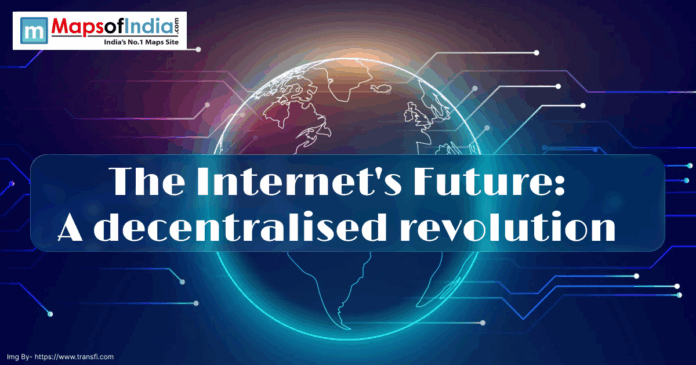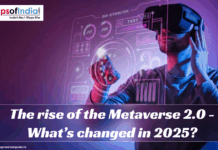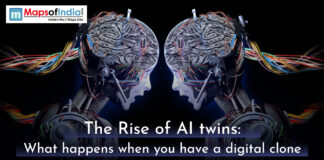Since the beginning, the internet has gone through many important changes. Both phases of the Internet have had an impact on the way we interact, talk and process information. Following all these changes, we are now facing a major shift towards a decentralized internet, often mentioned as Web 3.0. The changes mean users will have more control, and an even playing field will form online.
Understanding the Decentralized Internet
A main goal of a decentralized internet is to reduce the role of central authorities or middlemen. Rather than placing all data on big tech server farms, it is shared among many smaller nodes, so no single party holds all the power. Thanks to this architecture, security rises, censorship is lowered and users keep more power over their systems.
Key Features of Web 3.0
- User Empowerment and Data Ownership
Internet users have to give up some control over their private information to use services now. Web 3.0 aims to improve this situation by making it possible for people to have their own data. Tim Berners-Lee created Solid which enables users to keep their data online in PODs and allows access to programs only after getting permission. - Enhanced Privacy and Security
Being decentralized itself adds extra security. When data is stored across multiple nodes, the system is more reliable against being hacked. Furthermore, users can verify their identities anonymously and without disclosing personal information thanks to zero-knowledge proofs and decentralized identifiers (DIDs). - Decentralized Finance (DeFi)
Web 3.0 has led to a major change in financial systems by bringing DeFi. Lending, borrowing and trading can be done on DeFi platforms since they use blockchain technology to cut out intermediaries. Availability of financial tools becomes fairer, more affordable and more transparent. - Interoperability and Open Protocols
A strong decentralized internet depends on services being able to connect with others. By making protocols open, different platforms can work together which encourages new ideas and helps avoid controlling a single industry. Because services are connected, users are not forced to stay in one ecosystem. - Decentralized Applications (dApps)
Unlike traditional apps kept on servers, dApps use the power of decentralized peer-to-peer networks. They provide users with social media abilities, games and much more.
Implications for Users
- Greater Autonomy
People will now play a bigger role in shaping the digital world. From having personal data and digital identities, people can pick the circumstances and partners for sharing their details. - Economic Opportunities
A decentralized internet makes it possible for new types of business models to develop. With tokenization and smart contracts, whoever creates content can directly make money from their art and keep more of the earnings than they could before. - Resilience Against Censorship
Because information is shared across many nodes, decentralized platforms are hard to censor. Absence of a central authority over what can be said allows many perspectives, encourages people to speak out and guarantees free exchange of information. - Challenges to Consider
There are encouraging chances in the future, but moving to a decentralized internet does face difficulties. To make adoption universal and go without complications, issues like scalability, how users learn and rules should be handled first.
Real-World Applications and Initiatives
A number of projects illustrate the main ideas of Web 3.0:
- InterPlanetary File System (IPFS): A protocol called the InterPlanetary File System (IPFS) intends to make the web faster, safer and more open, by replacing main servers with shared file systems instead.
- Holochain: A tool available openly where people can build applications that share data directly with each other instead of using blockchains.
- Decentralized Social Networks: On Mastodon and Steemit, users have more control because these social platforms aren’t directed by a single organization.
Navigating the Transition to Decentralization
As the internet becomes more decentralized, the trip won’t be easy. Because they have done well as centralized businesses, some of the largest tech companies may try to prevent this transformation. People using and creating apps will face both technical and cultural shifts because of decentralization. People will need to learn and use available tools to handle digital wallets and get involved in DAOs. The outcome of Web 3.0 will be strongly influenced by users, developers, regulators and policy folks sharing their ideas to make it secure, inclusive and based on the basic principles of openness and fairness.
The Role of Regulation and Policy in Shaping Web 3.0
Because decentralized technologies are growing, regulation and policy play a critical role. Different countries and regulators are starting to find solutions for data privacy, cybersecurity, supervision of financial systems and concerns related to intellectual property in an internet with no central control. Balancing new ideas with user safety will need great attention. Carefully designed rules can stop abuse while letting user autonomy and openness which define Web 3.0, continue. A successful and lasting decentralized internet can be developed only if there is open communication among developers, policymakers and users.
The Importance of Community in a Decentralized Internet
Decentralization of the internet also brought about a strong focus on people handling their communities. Rather than Web 2.0 networks where control comes from a central authority, owners of decentralized networks can develop their own rules and guidelines by coming together. With this model, people involved can feel responsible, be part of the online community and build stronger relationships. Because DAOs are becoming more active, users now have a way to shape and guide the platforms they are part of, helping to keep the internet open for everyone.
Conclusion
Moving towards a more decentralized internet indicates more than progress in technology; it also symbolizes aiming for equal access to the internet. Focusing on giving users control, privacy and a sense of equality, Web 3.0 might deal with many of the past system’s issues. As we go through this change, it will be very important for everyone to stay aware and get involved to build an internet that helps people all over the world.





